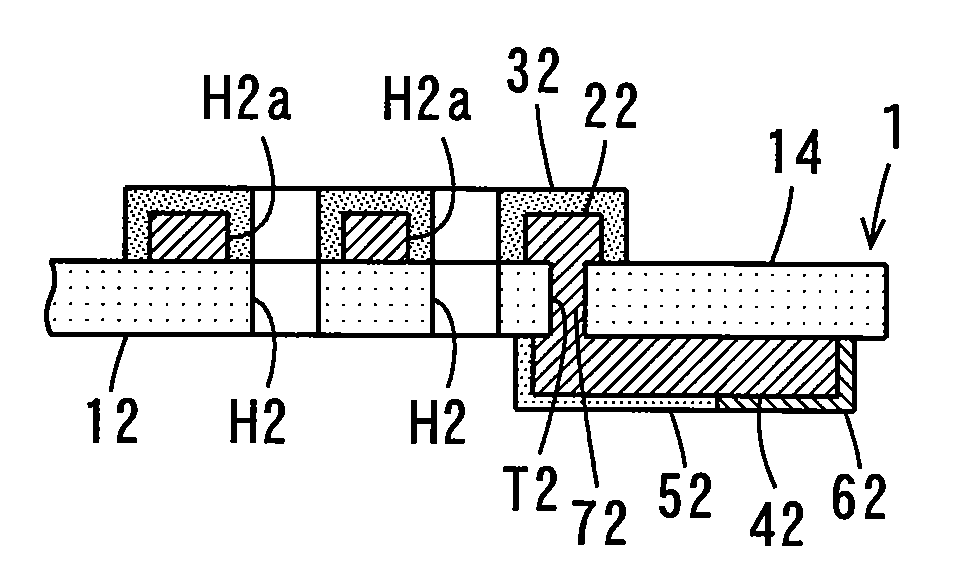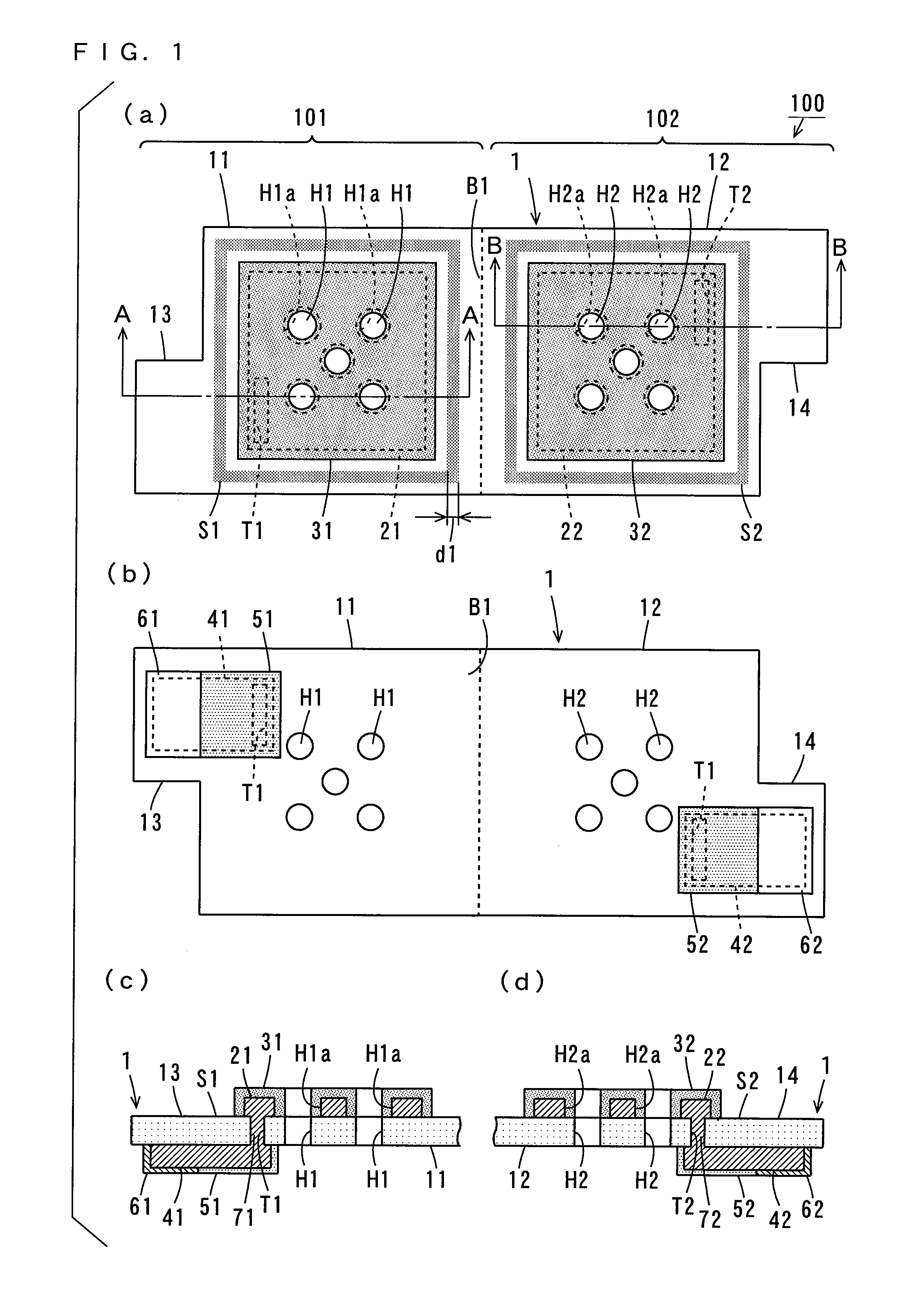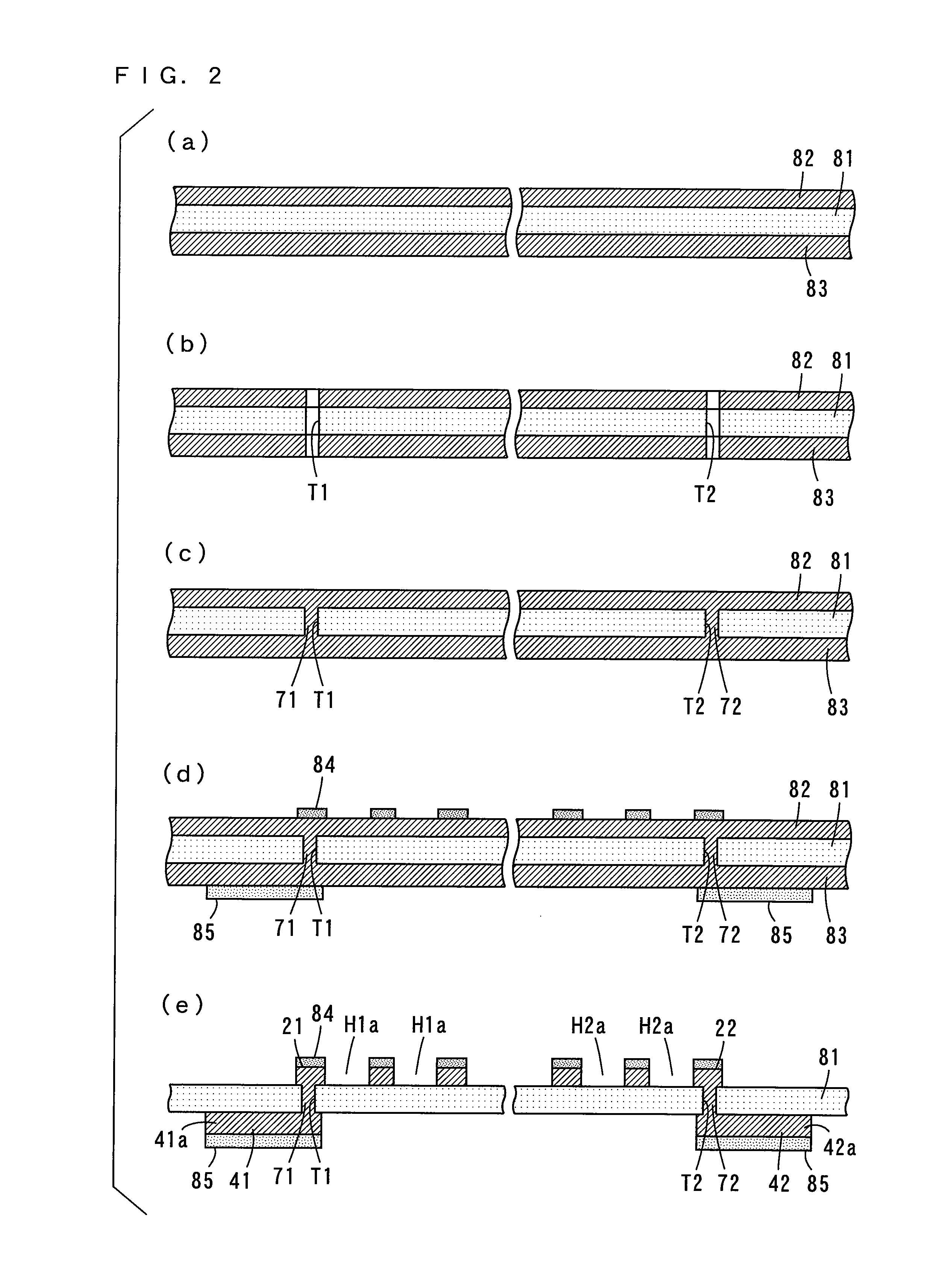Printed circuit board and fuel cell
a printed circuit board and fuel cell technology, applied in the field of printed circuit boards and fuel cells, can solve the problem that fuel leakage cannot be reliably prevented, and achieve the effect of reliably preventing fuel leakage and a fuel cell including
- Summary
- Abstract
- Description
- Claims
- Application Information
AI Technical Summary
Benefits of technology
Problems solved by technology
Method used
Image
Examples
first embodiment
(1) First Embodiment
(1-1) Configuration of Printed Circuit Board
[0036]FIG. 1 shows a plan view and a sectional view of a printed circuit board according to a first embodiment. FIG. 1 (a) shows one surface of the printed circuit board, and FIG. 1 (b) shows the other surface of the printed circuit board. FIG. 1 (c) shows a sectional view taken along the line A-A of FIG. 1 (a), and FIG. 1 (d) shows a sectional view taken along the line B-B of FIG. 1 (a).
[0037]As shown in FIG. 1 (a), the printed circuit board 100 includes a base insulating layer 1 made of polyimide, for example. The base insulating layer 1 includes a first insulating portion 11, a second insulating portion 12, a third insulating portion 13 and a fourth insulating portion 14 each having a rectangular shape. The first insulating portion 11 and the second insulating portion 12 have the same shape and size, and the third insulating portion 13 and the fourth insulating portion 14 have the same shape and size.
[0038]The first ...
second embodiment
(2) Second Embodiment
[0079]Description is made of a printed circuit board according to a second embodiment while referring to differences from the above-described first embodiment.
[0080]FIG. 5 shows a plan view and a sectional view showing part of the printed circuit board according to the second embodiment. FIG. 5 (a) shows the configurations of the top surfaces of the first insulating portion 11 and the third insulating portion 13, and FIG. 5 (b) shows a cross section taken along the line C-C of FIG. 5 (a). The configurations of the top surfaces and the back surfaces of the second insulating portion 12 and the fourth insulating portion 14 are the same as those of the first insulating portion 11 and the third insulating portion 13 shown in FIG. 5.
[0081]As shown in FIGS. 5 (a) and (b), the drawn-out conductor portion 41 is formed to extend to a position in proximity to the bend portion B1 in the printed circuit board 100a according to the present embodiment. Openings H11a each havin...
third embodiment
(3) Third Embodiment
[0084]Description is made of a printed circuit board according to a third embodiment while referring to differences from the above-described second embodiment.
[0085]FIG. 6 shows a plan view and a sectional view showing part of the printed circuit board according to the third embodiment. FIG. 6 (a) shows the configurations of the top surfaces of the first insulating portion 11 and the third insulating portion 13, and FIG. 6 (b) shows a cross section taken along the line D-D of FIG. 6 (a). The configurations of the top surfaces and the back surfaces of the second insulating portion 12 and the fourth insulating portion 14 are the same as those of the first insulating portion 11 and the third insulating portion 13 shown in FIG. 6.
[0086]As shown in FIG. 6, a plurality of (three in this example) holes T1 and the connecting layers 71 are formed in portions of the first insulating portion 11 between the collector portion 21 and the drawn-out conductor portion 41 in the p...
PUM
 Login to View More
Login to View More Abstract
Description
Claims
Application Information
 Login to View More
Login to View More - R&D
- Intellectual Property
- Life Sciences
- Materials
- Tech Scout
- Unparalleled Data Quality
- Higher Quality Content
- 60% Fewer Hallucinations
Browse by: Latest US Patents, China's latest patents, Technical Efficacy Thesaurus, Application Domain, Technology Topic, Popular Technical Reports.
© 2025 PatSnap. All rights reserved.Legal|Privacy policy|Modern Slavery Act Transparency Statement|Sitemap|About US| Contact US: help@patsnap.com



